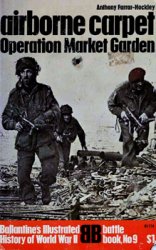As ordered, the 2nd Battalion arrived at Les Escomportes farm at 0500 on September 24. We halted and rested. In a small, dark farmhouse room, Colonel Haas ordered the Salzmann Battalion to move through the forest and seize and hold the intersection of Four-de-Paris—Varennes road and old Roman road. (Sketch 10)
The stimulation brought on by anticipation of a new mission caused us to overlook our fatigue, and I even forgot my complaining stomach.
While the battalion was getting under way the sun rose out of the morning mists like a red ball of fire. Maintaining direction by compass, we ploughed through the dense and trackless underbrush toward the intersection. I marched on foot at the head of the column which was frequently forced to detour around impenetrable undergrowth. During the last few years of peace the junior officers of the 124th Infantry had been given intensive training in the use of the compass at night, and this training now reaped its just reward.
It took us an hour to reach the old Roman road at a point about two-thirds of a mile from our objective. We moved off to the south with the usual march security. The battalion staff rode behind the advance guard.
Near a dilapidated shelter hut at the intersection of some of the forest trails, we found a badly wounded Frenchman shaking and miserable from cold and anxiety. According to his account, the poor chap had been left behind by his retreating comrades and had lain there since the action at Montblainville. Our aid men fell to and attended to his wounds.
A mounted reconnaissance detachment returned from the Four-de-Paris — Varennes highway and reported that the enemy had entrenched himself along the road. Caution was indicated. Preceded by security elements, the 5th and 6th Companies headed toward the highway over different routes. The tall trees were now clearly visible, but the underbrush was just as thick as before. The battalion commander remained with the 7th and 8th Companies in the vicinity of the shelter hut while I went on with the point of the 6th Company. A few dead Frenchmen lay beside the road. Suddenly we heard the sound of rapidly approaching horses up ahead. Were they friend or foe? Along this badly overgrown road the maximum visibility was eighty yards at the most. The point dove into the bushes on both sides of the road. The next moment a herd of rider-less horses came galloping around the turn, stopped at sight of us, and dashed off to the right.
6th Company reached the main road without further incident. On the left, 5th Company became engaged in a lively scrap.
I galloped back to the battalion to report. At the same time, 5th Company reported contact with the enemy behind an abatis some 500 yards south of the shelter hut. The advance of 5th Company had been halted and it was urgently requesting support.
Soon after this, two badly-wounded 5th Company officers were brought back. The volume of firing increased on the 5th Company front and shots were also heard from the 6th Company. Bullets crashed through the forest and we could not tell whether or not they were from snipers. (Sketch 10)
Major Salzmann committed the 8th Company on the left of the 5th Company. Both companies were to attack simultaneously and throw the enemy back across the Four-de-Paris—Varennes highway.

Sketch 10
The battle in the woods along the Roman Road, September 24, 1914.
The 8th Company had barely left when leading units of the 5th and 6th Jager Battalions arrived at the shelter hut. We learned that their mission was identical to ours. After a little deliberation, Major Salzmann committed the 5th Jager Battalion on the left of the 5th and 8th Companies, giving the Jagers the mission of assisting our companies in throwing the French back across the road.
Within forty-five minutes this attack had been stopped cold. According to the reports of many wounded, the enemy was located in considerable strength behind an abatis and had many machine guns in position.
About this time Captain Count von Rambaldi, of the 6th Company, came back slightly wounded and reported that he was opposed by a company of
French on the Four-de-Paris—Varennes highway about two hundred yards east of his present position and that the woods to the west of his unit still had not been cleared. I went up to the 6th Company to look over the situation. Advancing south of the Four-de-Paris—Varennes highway with a strong reconnaissance detachment from the 6th Company, I ran into the enemy sixty yards east of the 6th Company's hedgehog position. As a result of this reconnaissance I believed that we were opposed merely by a strong enemy outpost.
On returning to the battalion, I recommended that we attack along both sides of the road to seize Varennes, the 6th Company going straight down the road while the 7th Company and the 6th Jager Battalion attacked on either side of the road. This manoeuvre would take the enemy now holding up the others in flank.
Before any action transpired, we received a regimental order to clear the Varennes highway. The 5th and 6th Jager Battalions were attached to the 2nd Battalion for this operation. At this same time the 6th Company reported that closed columns of French were approaching from the direction of Four-de-Paris; so it was high time to clear up the situation in the east.
We got ready for the attack as fast as possible. The 6th Jager Battalion was to move south of the highway with its left flank on the road; the 7th Company was committed to the north of the road. The 6th Company was to attack on the left of the 7th Company after leaving strong security detachments on the Four-de-Paris road.
When all units had reported themselves ready, they moved forward to the attack. The battalion staff followed the 7th Company. A hundred yards from the jump-off we were forced to the ground by heavy enemy fire. We could hardly see more than twenty-five yards through the thick undergrowth and could see nothing of the enemy. Our companies opened fire and worked toward the invisible enemy by means of short rushes. Because of the deafening sound of the rifles, it was impossible to approximate the distance to the enemy. His fire increased in intensity. Our attack was halted.
In order to get the 7th Company moving forward again, Major Salzmann and I got into the front line. I took a rifle and ammunition from a wounded man and took command of a couple of squads. It was impossible to handle a larger unit in those woods. Several times we rushed through the bushes toward the enemy whom we supposed to be very close. We never succeeded in getting to him, but time and again his rapid fire forced us to the ground. The calls for aid men told us that our casualties were increasing.
Pressed flat on the ground, or behind thick oak trees, we let the enemy fire go by and then at the first let-up, attempted to gain more ground in his direction. It was becoming harder to get the men to move forward; consequently we gained ground slowly. Judging from the sound of the fighting, our neighbours were about abreast of us.
Once again we rushed the enemy in the bushes ahead of us. A little group of my former recruits came with me through the underbrush. Again the enemy fired madly. Finally, scarcely twenty paces ahead I saw five Frenchmen firing from the standing position. Instantly my gun was at my shoulder. Two Frenchmen, standing one behind the other, dropped to the ground as my rifle cracked. I still was faced by three of them. Apparently my men sought shelter behind me and couldn't help me. I fired again. The rifle misfired. I quickly opened the magazine and found it empty. The nearness of the enemy left no time for reloading, nor was any shelter close at hand. There was no use thinking of escape. The bayonet was my only hope. I had been an enthusiastic bayonet fighter in time of peace and had acquired considerable proficiency. Even with odds of three to one against me, I had complete confidence in the weapon and in my ability. As I rushed forward, the enemy fired. Struck, I went head over heels and wound up a few paces in front of the enemy. A bullet, entering sideways, had shattered my upper left leg; and blood spurted from a wound as large as my fist. At any moment I expected a bullet or bayonet thrust. I tried to close the wound with my right hand and, at the same time, to roll behind an oak. For many minutes I lay there between the two fronts. Finally my men broke through the bushes and the enemy retreated.
Lance Corporal Rauch and Private Rutschmann took care of me. A coat belt served as tourniquet and they bandaged my wound. Then they carried me back to the hut in a shelter half.
From up ahead word came that the enemy, leaving two hundred prisoners, had been driven from behind his abatis and out of the woods. Our own casualties had been considerable: 30 dead, including 2 officers, and 8 wounded, including 4 officers for the 2nd Battalion alone. As it was later reported in the regimental history, this was the third time in three days that the battalion had distinguished itself.
It was tough leaving these brave men. As the sun set, two men carried me back to Montblainville in a shelter half attached to two poles. I felt but little pain, yet I fainted from loss of blood.
When I regained consciousness in a Montblainville barn, Schnitzer, the battalion surgeon, was working over me. Hanle had brought him. My wound was dressed again, and I was loaded into an ambulance beside three wounded, groaning comrades. We left for the field hospital, the horses trotting over the shell-torn road. The jolting which resulted caused me great pain. When we arrived around midnight one of the men beside me was already dead.
The field hospital was overcrowded. Blanketed men lay in rows along the highway. Two doctors worked feverishly. They re-examined me and gave me a place on some straw in a room.
At daylight an ambulance took me to the base hospital at Stenay where, a few days later, I was decorated with the Iron Cross, Second Class. In the middle of October after having had an operation, I was taken home in a private car that had been placed at the Army's disposal.
Observations: The enemy along the Four-de-Paris—Varennes highway made it most difficult for the 2nd Battalion to accomplish its mission. Three battalions were finally engaged in the attack in the woods, and it was only after sustaining heavy losses that they were able to drive the enemy from the dense woods.
The high casualty rate began with the opening of the engagement. Among others, three officers were lost. It is hard to say whether or not French tree snipers were at work, for none was discovered and brought down.
With our high casualty rate we had difficulty in getting the men to drive ahead. In forest fighting, the personal example of the commander is effective only on those troops in his immediate vicinity.
In a man to man fight, the winner is he who has one more round in his magazine.




 World History
World History![Stalingrad: The Most Vicious Battle of the War [History of the Second World War 38]](/uploads/posts/2015-05/1432581864_1425486471_part-38.jpeg)









